The Guardian Top News|你的家是否暗藏健康隐患?从水龙头到牙刷,15种日常物品的肮脏程度令人震惊
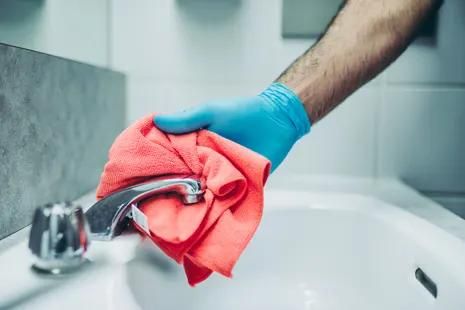 Kitchen and bathroom taps can be really gunky, one expert says. Photograph: Warchi/Getty Images
Kitchen and bathroom taps can be really gunky, one expert says. Photograph: Warchi/Getty Images
o Most everyday objects are at least a little bit grimy. They rarely, if ever, make contact with soap or disinfectant C unlike your toilet seat, even though thats the one thats often used as a symbol of filth in studies of household cleanliness. Aside from pathogens that can cause disease and illness, for the most part, were dealing with our own bacteria, says Jason Tetro, microbiologist and author of The Germ Code. This usually isnt a problem, especially for youngish healthy people C but, Tetro adds, when they accumulate, even if they are your own, it can lead to things like skin irritability, itchy scalp, cavities [in teeth from bacteria-heavy toothbrushes], that type of thing.
Does it matter that your reusable shopping bag might be carrying faecal bugs? Or that your watch strap is teeming with lifeforms? Are the studies C usually small, and sometimes conducted by cleaning-product companies C scaremongering or a grave matter of public health? Germ experts come clean.
Your taps
After going to the loo, or every time your hands are dirty, you touch the tap before washing them. If you dont have those [long lever] elbow taps like they have in hospitals, then youre going to be making your taps really gunky, and lead to the potential for cross-contamination, says Tetro.
Clean bathroom and kitchen taps regularly. In the kitchen, if youre washing your hands after handling raw meat, consider turning the tap on before you start. I would suggest you just keep a little stream going, and then you dont have to touch the taps until youve washed your hands properly. Admittedly, this is wasteful, so you could also make sure you disinfect your kitchen taps afterwards .
Kitchen sponges
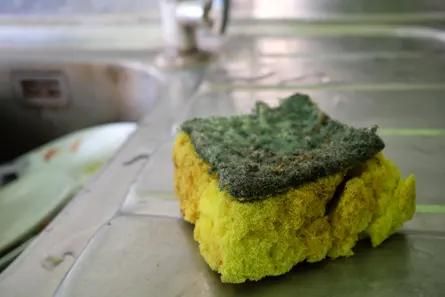
Im surprised new lifeforms dont evolve in kitchen sponges, says Chuck Gerba , professor of virology at the University of Arizona. They are prime habitats for microbes.
They are always wet, says Markus Egert , professor of microbiology at Hochschule Furtwangen University in Germany. They have a huge inner surface where a lot of microbes can grow, and you clean a lot of different stuff with them, so the microbes have a lot of nutrients to feed on. And they are rarely cleaned, so that makes them perfect. Thats why there are so many microbes in it within a very short time, billions of microbes. The concentration C not the type of microbes C is similar to a human stool sample. Studies have shown that sponges can contain harmful bacteria such as salmonella or campylobacter , which can cause severe food poisoning. For elderly people or young children, or those with a weakened immune system, this can be especially dangerous.
If you do use one, you could clean it in the microwave. Wet it thoroughly, put a bit of washing-up liquid on it and microwave it for one minute, and then let it dry out well. This reduces the number of germs very significantly, says Egert. But this could eventually prove counterproductive. The few microbes that survive probably can grow up very fast and so recolonise the sponge. If you do this several times, our hypothesis is that you select for more pathogenic, more resistant microbes than you had before. So you shouldnt do it too often. Or preferably dont use one at all C most sponges are made of plastic and arent biodegradable.
Cutting boards
One of the most neglected items in the kitchen, says Gerba, is the cutting board. People just rinse it off, he says, or theyll cut raw meats and then theyll make a salad on it, and you have all those cuts and crevices from cutting that make it difficult to clean. Probably the most important thing is putting it in a dishwasher, or rinsing and scrubbing it.
Toothbrushes
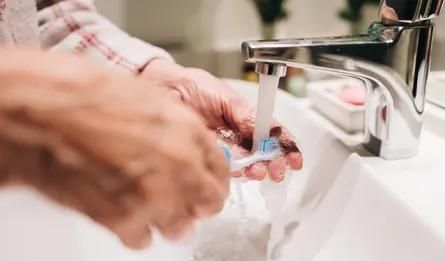
A toothbrush is going to be mainly oral bacteria, says Tetro. Some studies have shown a toothbrush can be home to 10m bacteria. But the microbiome in your mouth will change over time. If you have a lot of sugary, fatty foods, it may help change your microbiome towards bugs that are not so great, and theyll become even more populous, and then youre just spreading them in your mouth.
Give your toothbrush a clean every day. Run very hot water over the brush and underneath for five seconds. You should also be changing your toothbrush about once a month. Watch out for your toothbrush holder, too, where gunk accumulates. All the bacteria in the toothbrush end up growing in the bottom, says Tetro.
Hairbrushes
Tetro is suspicious of anything named brush that is never cleaned. With a hairbrush, its going to be yeast and fungi. After youve washed your hair, using a [dirty] hairbrush may transfer it into your hair. This could lead to dandruff, or scalp infections. It should be enough to clean your hairbrush once a month, says Tetro.
Water bottles
Sometimes dark, always moist, with water left for hours, warming up. Add to that oral bacteria, food particles and (if youre not a regular handwasher) possibly faecal bacteria, and your water bottle becomes a banquet for germs. If you fill your bottle with protein shakes or sugary drinks, its more like an all-you-can-eat for bacteria. One study found 20% of water bottles tested contained coliform bacteria (of faecal origin). Another study found an average water bottle had 20.8m colony-forming units C more than 40,000 times the number on a toilet seat.
If you drink water from a swimming pool, you should expect to drink poop C but, if its your own water bottle, probably not, says Tetro.
Its best to pour away old water, wash the bottle in hot water and washing-up liquid and, at least once a week, give it a good scrub with a (clean!) brush. Dont forget lids, straws and spouts.
Watch straps
Your fancy smartwatch is telling you everything you need to know about your resting heart rate and sleep quality, but it is harbouring a dirty secret C its teeming with germs. A 2023 study found that, while staphylococci were expected (theyre naturally found on skin), there were relatively high rates of pseudomonas bacteria (some variants can cause infections in humans) and 60% had enteric bacteria (found in the intestine), including E coli. Rubber and cloth straps were the worst, with gold and silver straps performing well.
Earphones
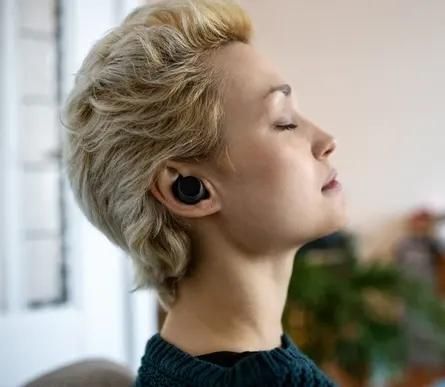
You handle them multiple times, drop them on the floor, put them in your pocket, share them with other people, and then jam them in your ears C a warm, dark, moist place, home to your usual bacterial flora, and now the venue for a whole host of germs to party to your playlist. One study that swabbed 50 earphones identified fungi and bacteria, including E coli.
Glasses
Again, anything that comes into contact with human skin is expected to be loaded with bacteria, and a study on spectacles found, unsurprisingly, that nose pads and the parts that touched the ears had higher concentrations. While the bacteria detected wouldnt be a concern to healthy people, the study found about 60% of the bacteria could be risky to people with compromised immune systems. It also identified bacteria linked to eye infections. It found alcohol wipes were the best at decreasing bacterial load, but many opticians say they could damage the lenses and advise warm soapy water and a soft cloth.
Spice jars
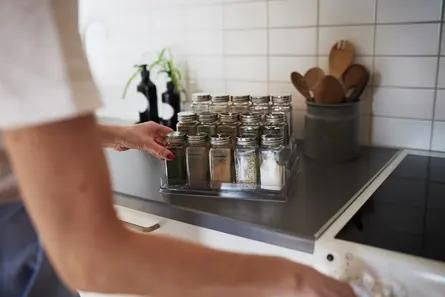
A 2023 food-handling study, following people who were making turkey burgers from raw meat, swabbed utensils and kitchen surfaces afterwards and found spice jars were the most frequently contaminated, with nearly half of the objects affected. Your salt and pepper shakers may also be giving you more than seasoning C a 2010 study by ABC News found shakers in restaurants were the second-dirtiest items on the table (after menus), and in a 2008 University of Virginia study , which tested objects that had been touched by cold sufferers, traces of the virus were found on all the shakers.
Reusable shopping bags
Reusable bags tend to get contaminated with bacteria from raw meat and produce, says Gerba. Putting them in a car trunk is like creating an incubator for the bacteria to grow in most climates. In one of his studies where reusable grocery bags were collected from shoppers and tested, more than half contained coliform bacteria, which probably came from raw meat and other produce, and E coli was detected in 8% of bags. When the team deliberately contaminated bags with meat juices and stored them in the boot of a car for a couple of hours, the bacteria increased tenfold.
They should be washed on a regular basis, says Gerba. He favours cotton bags.
Light switches
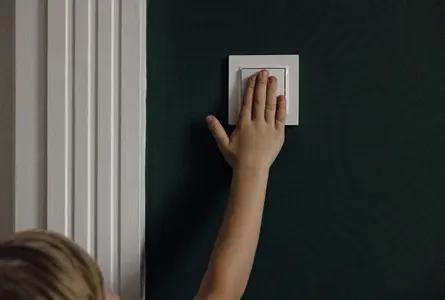
A team from the University of Houston tested light switches, among other areas including bathroom sinks and floors, in hotel rooms and found they were significant harbourers of faecal bacteria. In another test , nearly a quarter of light switches were found to be contaminated with the cold virus an hour after someone with snotty fingers had touched them.
Remote controls
Your TV remote might be 15 times more disgusting than your toilet seat. A survey for Churchill , the insurance company, found high levels of faecal bacteria on the remotes swabbed. Other surveys have found that between a quarter and third of people never clean their remote, a device that is touched by an average family of four an estimated 21,000 times a year.
Shower curtains
True, its not as if youll come out of the shower dirtier than you went in, but the curtain may be the dirtiest place in the bathroom. To use our trusty toilet-seat comparison tool, one study found shower curtains had 60 times more bacterial life. That was a laughably small study of three curtains, but its obvious theyre a danger zone C people have disgusting shower habits, such as urinating, and bacteria thrive in warm, wet places. So does mould.
Shower curtains are disgusting, says Tetro with a laugh. This is, again, one of those things where, if its your shower, your curtain, who cares, right? But a lot of people will share the shower space. As a result, you are going to have a lot more of those human germs. And not just from peoples hands and faces, he points out. Its going to be coming from your whole body, which is why we really should be disinfecting those shower curtains every time we disinfect the tub or the shower stall. You can also run the shower curtain through the washing machine every so often.
Vacuum cleaners
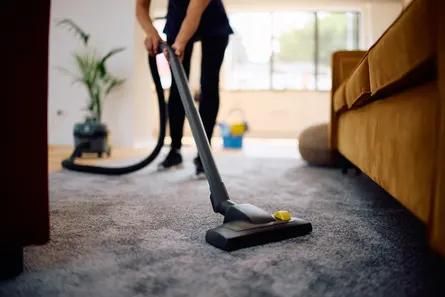
You should be mindful of how clean any of your cleaning appliances are, from mouldy washing machines to stinky dishwashers. You should be careful when you empty the vacuum cleaner, says Gerba. In samples of household vacuum cleaner contents, we found salmonella in about 10% of them. What you do is you pick up the bacteria and all this nice food for them to eat [in dust and debris], so it becomes a cafeteria for bacteria. With a bagless cleaner, dont shake it into your bin in the kitchen C do it outside if you can).
大多数日常物品至少都带有些许污垢。它们很少(甚至从未)接触肥皂或消毒剂——这与马桶座圈形成鲜明对比,尽管后者在家居清洁研究中常被用作肮脏的象征。微生物学家、《细菌密码》作者杰森·特特罗指出:“除了可能致病的病原体外,我们主要面对的是自身细菌。”这对年轻健康人群通常不成问题,但特特罗补充道:“当这些细菌积聚时,即使属于自身菌群,也可能引发皮肤敏感、头皮瘙痒、(细菌滋生的牙刷导致的)蛀牙等问题。”
您可曾想过,日常使用的环保购物袋可能携带粪便细菌?或是手表表带正滋生着大量微生物?这些通常样本量较小、有时由清洁产品公司主导的研究,究竟是在危言耸听,还是关乎公众健康的重大问题?微生物专家们给出了真相。
您的水龙头
特特罗(Tetro)表示:"如厕后或双手脏污时,人们通常会先触碰水龙头再洗手。如果家中没有医院那种长柄肘触式水龙头,普通龙头就会变得黏腻污浊,进而导致交叉污染的风险。"
定期清洁浴室和厨房的水龙头。在厨房处理生肉后洗手时,建议先打开水龙头再开始洗手。"我建议让水流保持细小流动,这样在彻底洗净双手前就无需触碰龙头。"虽然这种做法确实浪费水资源,但您也可以在事后对厨房水龙头进行消毒处理。
厨房海绵
亚利桑那大学病毒学教授查克·格巴(Chuck Gerba)表示:“我很惊讶厨房海绵里没有进化出新生命形式,它们可是微生物的理想栖息地。”
德国富特旺根大学微生物学教授马库斯·埃格特(Markus Egert)表示:“它们总是湿漉漉的。其内部巨大的表面积可供大量微生物滋生,而人们又用它清洁各种物品,这为微生物提供了丰富的营养来源。加之它们很少被彻底清洗,因此成为完美的细菌温床。这就是为什么在极短时间内,海绵里就能滋生数以亿计的微生物——其微生物浓度(而非种类)与人类粪便样本相当。”研究表明,海绵可能含有沙门氏菌或弯曲杆菌等有害细菌,这些细菌会导致严重的食物中毒。对于老年人、幼儿或免疫系统较弱的人群而言,这种情况尤为危险。
若使用海绵清洁,可尝试用微波炉消毒:先彻底浸湿海绵,涂抹少量洗洁精,微波加热一分钟并充分晾干。埃格特(Egert)表示:"这种方法能显著减少细菌数量。"但长期可能适得其反——"存活下来的少量微生物会快速繁殖,重新占据海绵。若多次重复此操作,我们推测会筛选出比原有菌种更具致病性和耐药性的微生物,因此不宜频繁使用。"更建议完全避免使用海绵,因其多为不可降解的塑料制品。
砧板
格尔巴(Gerba)指出,砧板是厨房中最容易被忽视的物品之一。他表示:“人们只是简单冲洗一下,或者切完生肉后直接在上面做沙拉。砧板上那些切割留下的刀痕和缝隙很难彻底清洁。最重要的处理方法可能是用洗碗机清洗,或者彻底冲洗并用力擦洗。”
牙刷
特特罗(Tetro)表示:“牙刷上主要滋生的是口腔细菌。”研究表明,一把牙刷可能滋生多达1000万细菌。“但口腔微生物群会随时间变化。如果摄入大量高糖高脂食物,可能导致微生物群向有害菌种转变,这些细菌会大量繁殖,进而扩散至整个口腔。”
每天清洁你的牙刷。用滚烫的热水冲洗牙刷表面及底部五秒钟。此外,牙刷应每月更换一次。还需注意牙刷架的清洁,污垢常在此堆积。特托(Tetro)指出:“牙刷上的细菌最终会在底部滋生。”
发刷
泰特罗(Tetro)对任何名为“刷子”却从未清洁过的物品持怀疑态度。他指出:“梳子上会滋生酵母菌和真菌。当你洗完头发后,使用(肮脏的)梳子可能会将这些微生物转移到头发上。”这可能导致头皮屑或头皮感染。泰特罗建议,每月清洁一次梳子应该足够。
水瓶
水杯环境时而阴暗,常年潮湿,静置数小时的水会逐渐升温。再加上口腔细菌、食物残渣,以及(若不勤洗手)可能存在的粪便细菌,你的水杯便成了微生物的盛宴。若用杯子装蛋白奶昔或含糖饮料,对细菌而言更像是自助大餐。一项研究发现,20%的受测水杯含有大肠菌群(源自粪便);另一项研究显示,普通水杯平均携带2080万菌落形成单位——是马桶座圈细菌数的4万倍以上。
“如果你喝游泳池里的水,就得做好喝下粪便的准备——但如果是你自己的水瓶,大概就不会了。”泰特罗说道。
最好倒掉瓶中的陈水,用热水和洗洁精清洗瓶子,并每周至少用(干净的!)刷子彻底刷洗一次。别忘了清洁瓶盖、吸管和壶嘴。
表带
你那款时髦的智能手表能告诉你关于静息心率和睡眠质量的一切数据,却隐藏着一个肮脏的秘密——它其实布满细菌。2023年的一项研究发现,虽然检出葡萄球菌属意料之中(它们天然存在于皮肤上),但假单胞菌(某些变种可导致人类感染)的比例相对较高,更有60%的表带携带肠道细菌(包括大肠杆菌)。其中橡胶和织物表带卫生状况最差,金银材质表带表现最佳。
耳机
你反复摆弄它们,将它们掉在地上,塞进口袋,与他人共用,最后又塞进耳朵——这个温暖、阴暗、潮湿的角落本就是细菌的温床,如今更成了各类微生物随着你的播放列表狂欢的派对场地。一项对50副耳机进行拭子检测的研究发现,其中存在真菌和大肠杆菌等细菌。
眼镜
再次强调,任何与人体皮肤接触的物品都可能携带大量细菌。一项针对眼镜的研究发现,鼻托和接触耳朵的部位细菌浓度较高,这并不令人意外。虽然检测到的细菌对健康人群无碍,但研究发现约60%的细菌可能对免疫系统较弱者构成风险。该研究还发现了与眼部感染相关的细菌。研究显示酒精湿巾最能有效减少细菌负荷,但许多验光师指出这可能损伤镜片,建议使用温肥皂水和软布清洁。
香料罐
2023年一项关于食品处理的研究追踪了用生肉制作火鸡汉堡的人群,随后对餐具和厨房台面进行拭子检测,发现香料罐是污染最严重的物品,近半数受检对象存在污染。您的盐瓶和胡椒瓶可能不仅提供调味料——美国广播公司2010年研究发现,餐厅里的调味瓶是餐桌上第二脏的物品(仅次于菜单);而弗吉尼亚大学2008年研究检测了感冒患者接触过的物品后,在所有调味瓶上都发现了病毒痕迹。
可重复使用的购物袋
格尔巴(Gerba)指出:"可重复使用的购物袋容易受到生肉和农产品中细菌的污染。将它们放在汽车后备箱里,就像在大多数气候条件下为细菌创造了繁殖的温床。"在他的一项研究中,研究人员从消费者处收集并检测了可重复使用的购物袋,发现超过半数含有可能源自生肉和其他农产品的大肠菌群,8%的袋子检测出大肠杆菌。当研究团队故意用肉汁污染袋子,并将其存放在汽车后备箱数小时后,细菌数量增长了十倍。
“它们应该定期清洗,”格尔巴(Gerba)表示。他更偏爱棉质购物袋。
电灯开关
休斯顿大学的一个研究团队对酒店房间内的电灯开关、浴室洗手池和地板等区域进行了检测,发现这些地方是粪便细菌的重要藏匿处。在另一项测试中,当手指沾有鼻涕的人触碰电灯开关一小时后,近四分之一的开关表面被检测出带有感冒病毒。
遥控器
你的电视遥控器可能比马桶座圈脏15倍。保险公司丘吉尔委托的一项调查发现,被检测的遥控器上存在大量粪便细菌。其他调查显示,约25%至33%的人从未清洁过遥控器——这个设备被普通四口之家每年触摸的次数估计高达2.1万次。
浴帘
诚然,你洗完澡后并不会比洗澡前更脏,但浴帘可能是浴室里最脏的地方。用我们常用的马桶座圈作为对比工具,一项研究发现浴帘上的细菌数量是马桶座圈的60倍。这项研究仅调查了三块浴帘,样本量小得可笑,但显然它们属于危险区域——人们有一些令人作呕的洗澡习惯,比如小便,而细菌在温暖潮湿的环境中极易滋生,霉菌也是如此。
“浴帘简直令人作呕,”泰特罗笑着说道,“这又是那种情况——如果是你自家的淋浴间和浴帘,谁会在乎呢?但很多人会共用淋浴空间,结果就会滋生更多人体携带的细菌。”他特别指出,这些细菌不仅来自人们的手部和面部。“它们会来自你的全身,这就是为什么每次清洁浴缸或淋浴房时,我们都应该给浴帘消毒。”此外,你也可以定期用洗衣机清洗浴帘。
吸尘器
你应当留意家中清洁用具自身的卫生状况——无论是发霉的洗衣机还是散发异味的洗碗机。"清空吸尘器时需格外谨慎,"格尔巴教授指出。在对家用吸尘器尘垢的采样研究中,"我们发现约10%的样本含有沙门氏菌。当你收集灰尘和碎屑时,实际上是在为细菌提供生存所需的养分,这使吸尘器变成了细菌的温床。"对于无尘袋式吸尘器,切勿在厨房垃圾桶上方倾倒灰尘——尽可能选择在室外进行处理。
举报/反馈
相关知识
The Guardian Top News|你的家是否暗藏健康隐患?从水龙头到牙刷,15种日常物品的肮脏程度令人震惊
日常物品中的细菌隐患及清洁技巧
儿童玩具暗藏健康隐患——水晶泥的致命诱惑
4种健康食品暗含的隐患
令你很吃惊的健康误区
看似养生的日常习惯,真的有益健康吗?或许暗藏隐患
你的舌苔颜色是否健康?这三种颜色可能暗藏健康隐患,速自查→
震惊!这些日常保健品竟含有违禁词,你注意到了吗?
食物中毒事件震惊社会,原因令人震惊
令人震惊!娱乐圈隐藏的健康危机,你知道吗?
网址: The Guardian Top News|你的家是否暗藏健康隐患?从水龙头到牙刷,15种日常物品的肮脏程度令人震惊 https://m.trfsz.com/newsview1663837.html